Wild Strawberries – Foraging, Growing, and Look-Alikes
Wild strawberries are some of my favorite wild fruits. We share where to find wild strawberries and how to identify them and avoid mock strawberries. We also share edible and medicinal uses of wild strawberries, including strawberry leaf tea, plus growing tips.
Wild Strawberry (Fragaria virginiana) is also known as Virginia strawberry or common strawberry. It is related to the alpine or woodland strawberry, Fragaria vesca, and the coastal strawberry, Fragaria chiloensis.
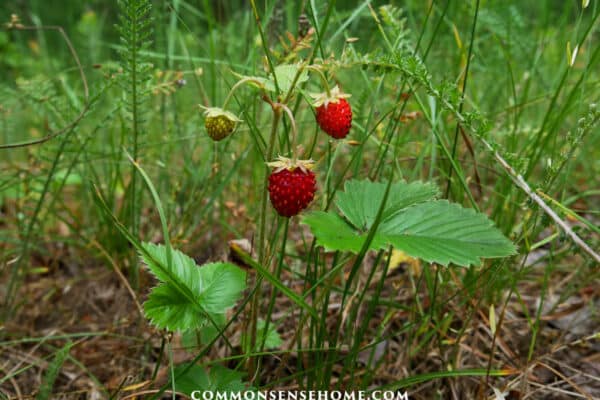
Where can I find Wild Strawberries?
Wild strawberries grow throughout the U.S. and Canada. The plants prefer dry locations with rich loamy soil. They pop up near the edges of woods, in yards, and along roadsides.
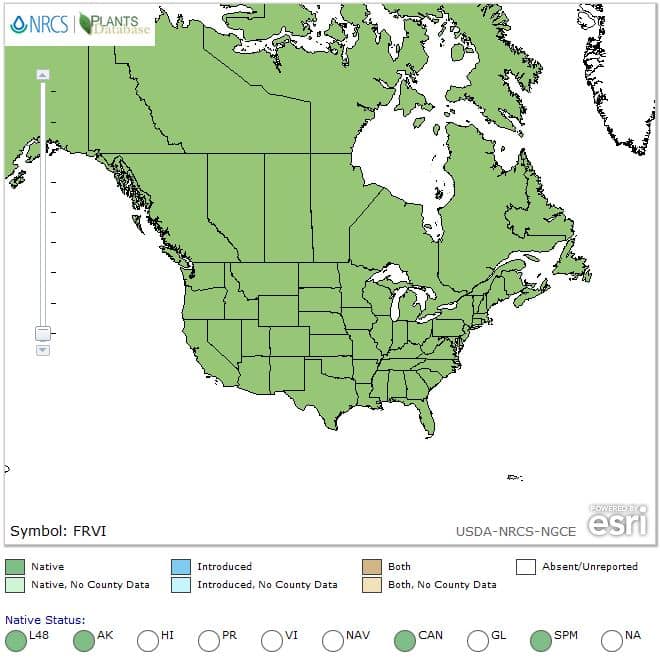
Identification – Leaves, Flowers, and Fruit
The trifoliate leaves have three parts. Each coarsely toothed leaf grows on a long, hairy stalk. Each leaflet is around 1 inch in length.
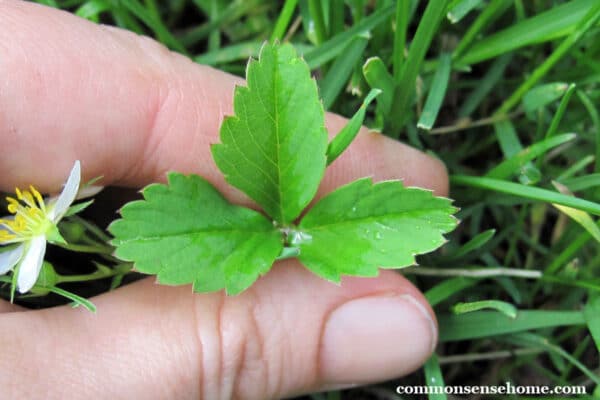
Strawberry plants bloom from late spring to early summer, followed by berries. The flowers have five white, round petals surrounding a yellow center.
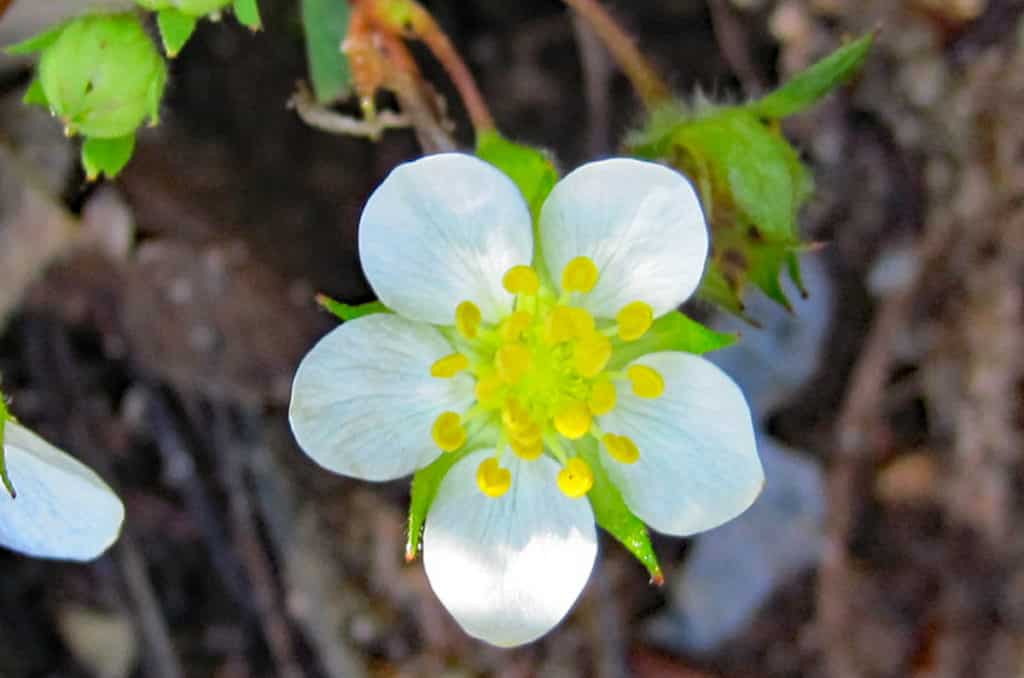
When the flowers mature, they produce a small, red fruit that looks like a miniature strawberry. They are very sweet and tasty, but typically less than 1/4 inch across. Here in Wisconsin, they show up between mid-June and early July.
Can you eat a Wild Strawberry?
Wild strawberries are edible, sweeter and deeper in flavor than most of their cultivated kin. The tricky part is finding enough of them to do anything other than enjoy a few sweet bites.
Wild strawberries are high in Vitamin C, potassium, folate and fiber. They have a long history of medicinal use by native peoples. (See The Wild Strawberry: A Sacred Purifier.)
One study suggests that the higher antioxidants levels in wild strawberries might help fight cancer. That’s my kind of medicine.
The berry juice is cooling, and is good for fevers and sunburn. Apply the juice to a sunburned area, then rinse gently after about half an hour. Cherokee Indians used the fruit to remove tartar. Simply hold the crushed fruit in the mouth for around 5 minutes, then follow with a good brushing.
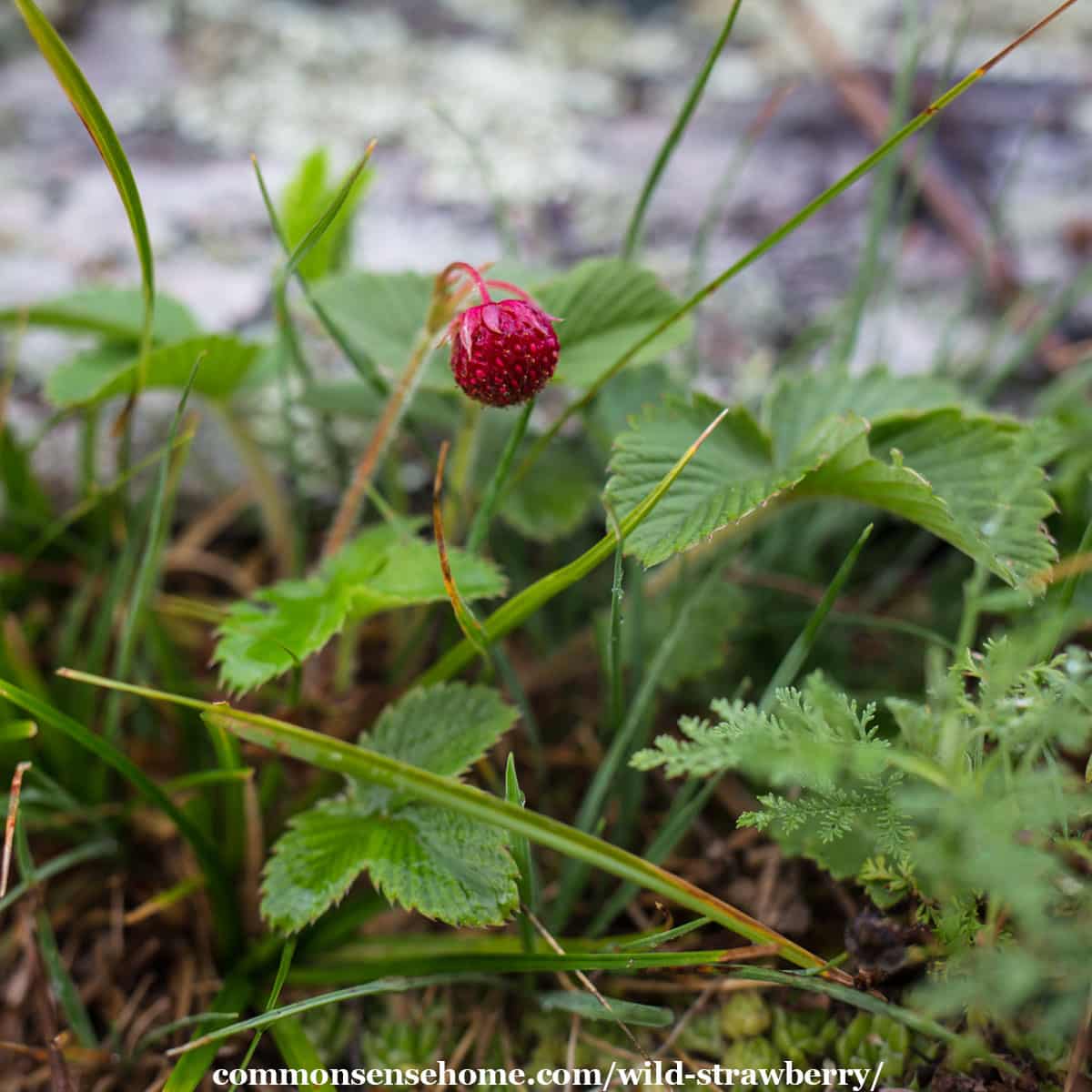
Strawberry Leaf Tea
Strawberry leaves are exceptionally high in vitamin C. Use the fresh or dry leaves to make a mild tea. Make sure the leaves are in good condition and completely fresh or completely dry. Wilted leaves may produce a dangerous mold.
To make strawberry leaf tea, place several teaspoons of fresh or dried leaves into a cup. Cover with boiling water and steep for 10-15 minutes.
This tea has been used traditionally for urinary tract problems, stomach cramps, warding off colds, and more. The book “Edible and Medicinal Wild Plants of the Midwest” is an amazing resource for using wild plants.
Are Wild Strawberries Invasive?
Wild strawberries (Fragaria virginiana) are native to North America, so they’re not invasive if you live in North America. That said, there are some look-alikes that are invasive. (See below.)
Wild strawberries are perennials, coming back year after year. The plant sends out runners, spreading in clumps throughout an area. They grow vigorously in spring, and may die back and go dormant as late summer heat sets in.
Would you like to save this?
Some people use the plants for ground cover or as edging for garden beds. Since they are smaller than standard garden strawberries, they may work better for container planting.
Mock Strawberry vs Wild Strawberry
The invasive “wild strawberries” are another plant entirely. Potentilla indica, previously known as Duchesnea indica, looks quite similar, but is native to Asia. Common names include mock strawberries, false strawberries, and Indian strawberries.
The easiest way to tell the difference between the two plants is the flowers. Fragaria virginiana has white flowers, and Potentilla indica has yellow flowers. These plants also spread like crazy, making them a bane to many gardeners.
Are mock strawberries poisonous? No, but the flavor is bland and watery. They may cause a mild reaction in some people, just like real strawberries.
What’s the Difference Between Wild Strawberries and Strawberries?
Wild strawberries (Fragaria virginiana) are naturally occurring wild plants with tiny berries. Our modern garden strawberries are varieties descended from a crossing of these strawberries with Chilean strawberries ((Fragaria chiloensis).
Breeders started working with the berries in the early 1700s. The first commercial varieties started appearing in the United States in the mid-1800s. See “History of the Strawberry” for more information.
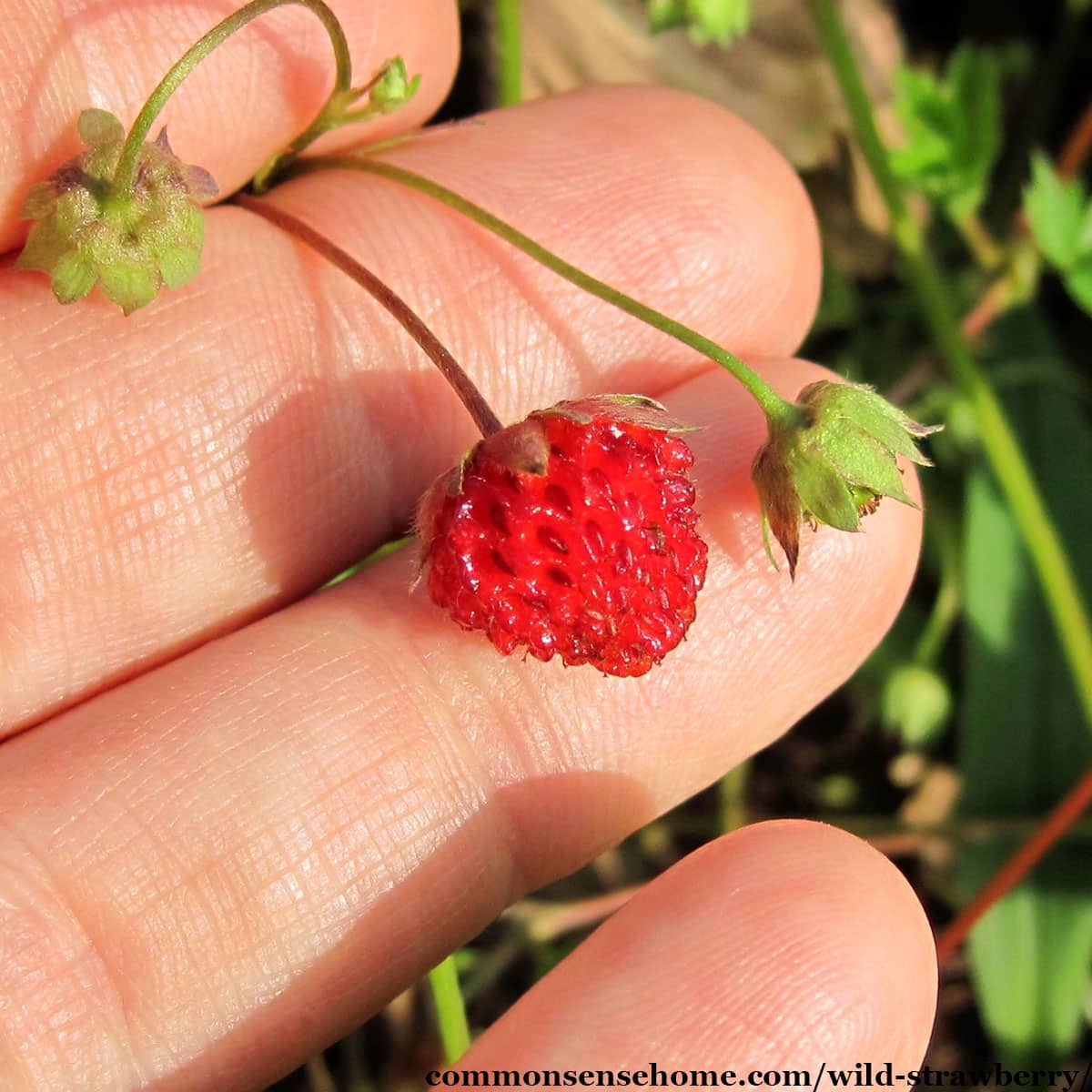
Can Wild Strawberries be Tamed?
Yes! Growing strawberries, whether garden strawberries or wild strawberries, is similar. They like rich soil, ample sun, and a nice layer of straw mulch. You can transplant berries from a healthy wild patch, or order bare root plants from some nurseries.
Alpine strawberries (Fragaria vesca) are a related species. The seeds are starting to show up in more nursery catalogs.
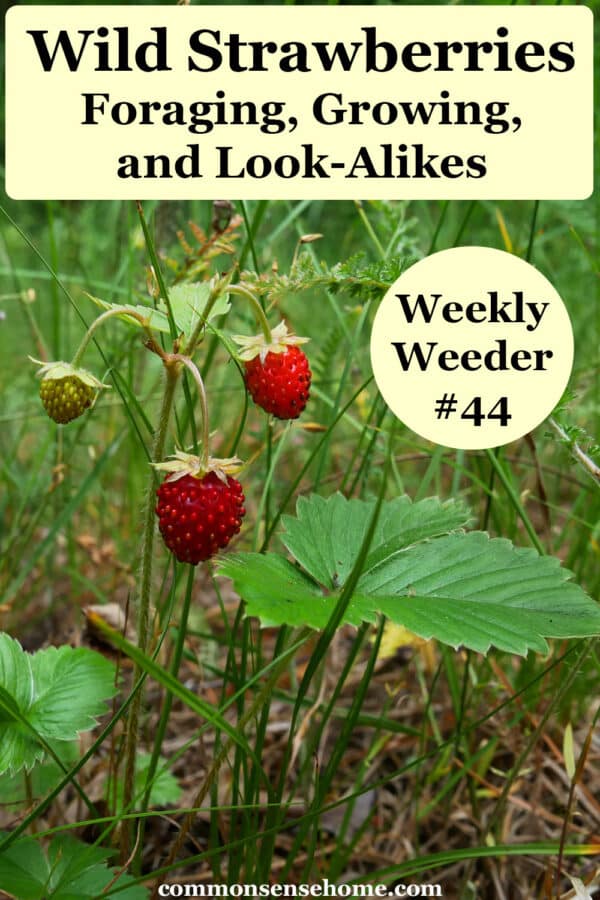
Wildlife Habitat
Wildlife loves wild strawberries for the blossoms, fruit and leaves. Native pollinators, including many different bees and butterflies, work the flowers. Insects, birds, and mammals eat the leaves and berries. Illinois wildflowers provides a detailed list of the animals that use wild strawberries.
This article is for general informational only. Always exercise caution when using any wild plants and make sure you have positively identified the plant. If you are allergic to domestic strawberries, you are also likely to be allergic to wild strawberries.
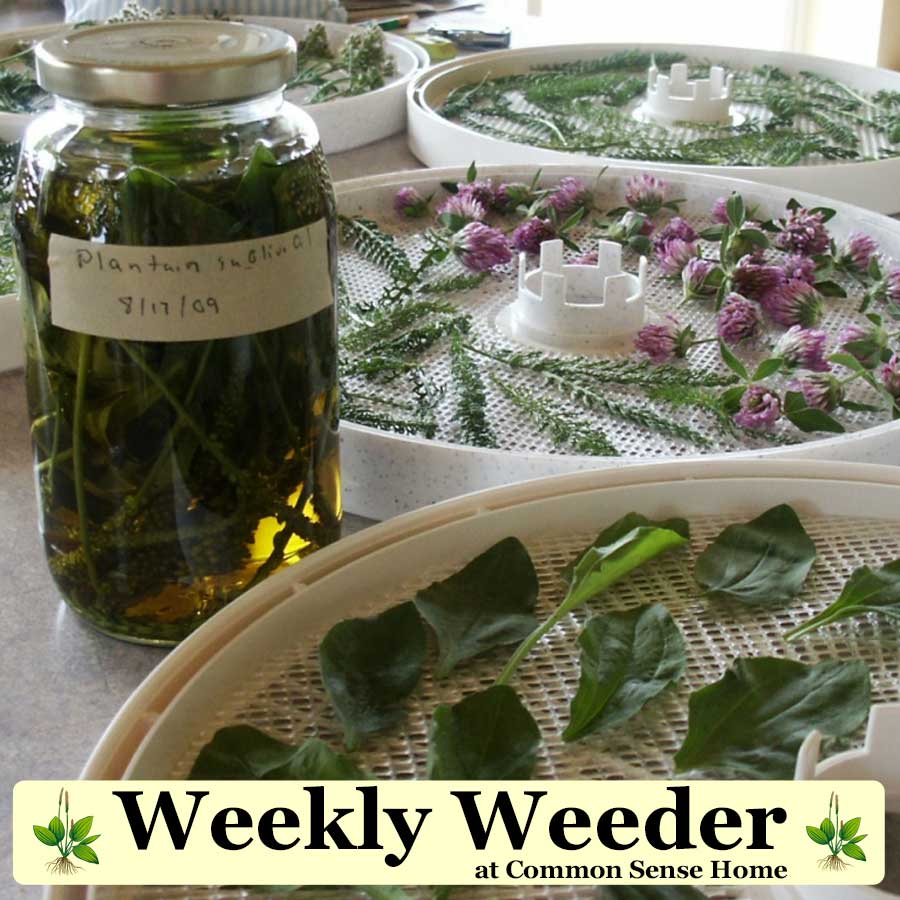
More Information about Wild Plants
Thanks so much for stopping by to visit. This post is #44 in the Weekly Weeder series, where we talk about using common wild plants. You can view the entire series on the Herbs and Wildcrafting page.
Articles include:
- My Favorite Wildcrafting Resources
- Queen Anne’s Lace – Butterfly Host Plant and Blueberry Protector
- Grandma Called it Medicine Leaf – Plantain Weed Remedies

This article is written by Laurie Neverman. Laurie was raised on a small dairy farm in northwest Wisconsin, where she gathered wildflowers from the woods and pastures. Now she and her family have 35 acres in northeast Wisconsin, where they combine intentional plantings and semi-wild areas. Every season is a new opportunity to learn more about working with wild plants.
Last updated in 2023.

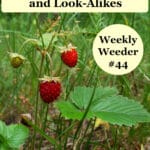
I have a small tiny strawberry patch in my garden (NZ) transplanted from a single plant last winter. We call them alpine strawberries. It’s such a treat when there’s a few ripe fruit found – very sweet little morsels. Interesting to learn that we can use the leaves too.
Yes, those are likely Fragaria vesca, also delicious and showing up in more gardens.
I have a row of fragaria virginiana in my yard that have been growing for 2.5 years. The plants are doing well and seem healthy but I have had no strawberries? Any ideas why? Thanks.
There seems to be an another plant, or a variety of wild strawberries that produces no fruit or extra-tiny inedible fruit. I can’t find it in any of my weed books, but I do find it in online discussions. If you don’t have flowers, you may be dealing with this variant. If you have flowers but no fruit, try some of the troubleshooting tips in the tomato blossom post – https://commonsensehome.com/tomato-flowers/
I just brought wild strawberry seeds from http://www.sandmountainherbs.com You have to plant them in the fall. He has a lot of interesting seeds that you can’t find any where else that I know of.
I have wld strwberrie in my front yard but they are not sweet like ones I ate as a child in upstste N Y. Are threr any look alikes for wild strawberries?
Dick
As noted at the top of the post, there are several related species that look very similar. I have seen it noted that some of the others are not as tasty, but these are the type that grow near us so I haven’t tasted the others.
I had to laugh when I saw the distribution map for strawberries, a reminder that North America is richly blessed! In addition to the possibility of being another species of berry with less flavor, I wonder if soil chemistry might have something to do with how high on the sweetness scale the berries can go? We have wild strawberries growing near our driveway, which is mostly sand and gravel slowly being covered by low growing field herbs. Some patches taste sweeter than others, and the difference seems to be correlated by how densely covered that patch along the driveway is in weeds. Maybe over time this means here is more herb enriched organic matter there? I also recently read that cultivated strawberries benefit from being moved into a new bed every three years. No reasons were given, but my thought is that this reduces the probability of disease and the potential that the new bed would have been built with soil amendments, which in my case would be well aged compost and supplementary minerals and trace minerals.
With cultivated strawberries, it’s best to move the patch after a couple years because it tends to turn into an unmanageable thicket as the runners spread and quackgrass pops up. The younger plants also tend to be more productive. You give them a spot, and they go crazy for a year or two, then start to get too overcrowded.
Sweetness is highly likely to affected by soil and other ambient conditions, like amount of sun and heat.
I thought the range map was humorous, too. Of course the berries aren’t everywhere, only where conditions are right, but they are capable of growing under a wide range of climates.
We have wild strawberries in north Ga.(north of Atlanta). They grow wild easily here in places as you mentioned. They are much smaller and more tart than commercial strawberries.
That’s interesting. The ones I’ve tasted tend to be sweeter than commercial berries. It’s fascinating to me how plants are similar but different in different locations.
Thanks for the great article! I read that study a few years back about wild strawberries having superior levels of antioxidants. As they suggested, I was hoping such strains would pop up at local farmer’s markets, but I haven’t seen them yet! Needless to say, I always stop at the side of the road and load up a couple pockets full whenever I see them!
Hey Phil! Nice to “see” you. I suspect these little gems are too labor intensive to show up at the market any time soon, but we can dream. 🙂
I remember as a little girl, going out to catch the bus in the morning and raiding the strawberries growing in our yard (note to self: don’t eat them right after brushing your teeth, bad idea!) I also remember being out there with a bowl and picking them to sprinkle on our icecream for dessert. Nom nom!